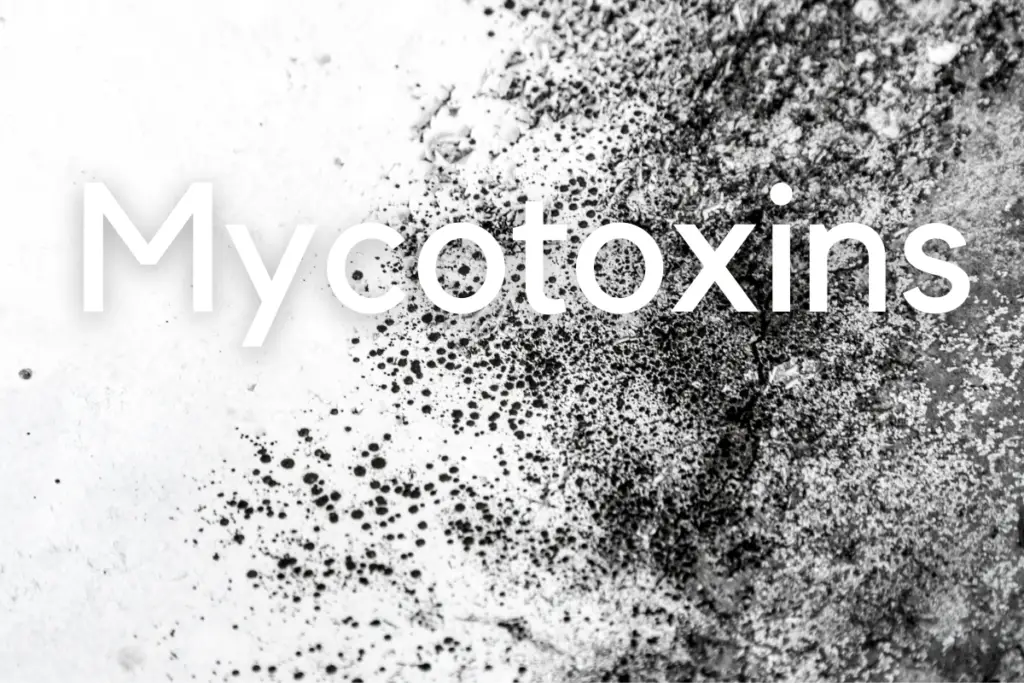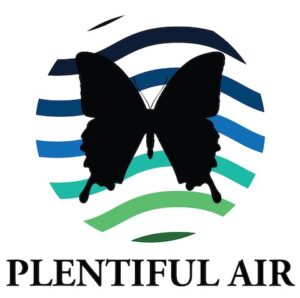Mycotoxins are the primary pathogenic element responsible for mold infections. Given that, on average, we have 50,000 mold spores per cubic meter of space, mycotoxins are naturally concentrated in the air. As air purifiers trap airborne contaminants, one might question if they can remove mycotoxins from the air.
Air purifiers with activated charcoal, titanium dioxide (TiO2) filters, or ozone generators can eliminate airborne mycotoxins. However, purifiers with HEPA filtration, UV bulbs, ionizers, or electrostatic chambers can remove mold spores and colonies, thus, minimizing mycotoxin production.
This article gives a comprehensive overview of mycotoxins, their types, health effects, and common sources at home. We then discuss whether air purifiers can protect against mycotoxins and how.
What are Mycotoxins

Mycotoxins are fungal products mainly produced from mold species.
They are toxic to plants, animals, and humans alike.
Molds are microscopic, multicellular organisms found across all ecosystems. They mostly occur as airborne spores, measuring 3 to 40 microns. In adequate conditions, i.e., relative humidity above 55% and temperature at 65 degrees, the spores sprout to form yellowish or black, powdery mold colonies.
As of yet, we don’t know if mycotoxins are essential for mold growth or metabolism. However, it is speculated that the chemical might serve as a virulence factor (enable the mold to invade cells and cause infections) and defense mechanism for molds.
While mold spores trigger respiratory distress, mycotoxins are the main threat of mold exposure.
Exposure
Consuming contaminated food is the most common source of mycotoxins in the home.
Molds grow on crops and can be a part of packaged cereals. The US Food and Drug Administration (FDA) conducts several tests on food before allowing it on the market to prevent mycotoxin contamination. This means you can reduce mycotoxin exposure by buying agricultural commodities from high-end, FDA-approved brands.
The real problem arises from mold spores in homes. These spores are lightweight and microscopic and can easily spoil food items at home.
Vegetables often develop greenish mold patches. If it is firm, it means mold hasn’t penetrated, and you can typically cook the vegetable after cutting the moldy part off, and washing the rest thoroughly.
However, if the vegetable goes soft due to mold, it is generally considered unsafe to eat.
Other than that, inhaled spores can release mycotoxins into the body, leading to adverse health effects.
Types
Over 300 mycotoxins have been identified, but according to the World Health Organization (WHO), the following six types are of particular concern:
| Mycotoxin | Produced By | Food Sources |
| Aflatoxin | Aspergillus flavus and Aspergillus parasticus | Maize, peanuts, cottonseed, tree nuts |
| Ochratoxin | Aspergillus and Penicillium | Cereal grains like barley, rye, wheat, corn, and oats |
| Patulin | Aspergillus, Byssochlamys, and Penicillium | Juices, jams, and ciders |
| Fumonisin | Fusarium | Cereals and corn |
| Zearalenone | Fusarium | Rice, sorghum, corn, and hay |
| Deoxynivalenol | Fusarium | Corn, wheat, barley, rice |
Side Effects
Mycotoxins cause several mild to severe side effects in humans:
- Fatigue
- Nausea
- Headache
- Nephropathy (kidney disease)
- Cancers (especially liver cancer)
- Alimentary toxic aleukia (characterized by nausea, diarrhea, hemorrhage, skin inflammation and even death)
- Hepatitis
- Hemorrhage
- Weak immune system
- Neurological disturbances
They are also responsible for a variety of animal diseases. Mycotoxins are known to reduce growth rate, increase susceptibility to infections, and interfere with the natural resistance mechanisms of animals.
How Air Purifiers Can Remove Mycotoxins
Air purifiers are appliances that sanitize and sterilize air by extracting harmful airborne contaminants and trapping them into filters. A rotating fan draws polluted air inside the unit, which is then passed through a series of filters. The clean air is then blown out into the room.
Filtration System
The filtration system defines the efficiency of the unit and determines whether it can remove mycotoxins or not. Multiple air filters are used in air purifiers, each of which captures a different type of contaminant.
Pre-Filter
The pre-filter is a generic filter with large pores. Almost all modern air purifiers have a pre-filter. Because of their pore size, most of the contaminants pass through them, including mycotoxins. It is only useful for capturing some large-sized particulate matter and primarily serves to prolong the optimal life of the succeeding (following) filters.
True HEPA Filter
A HEPA or ‘High-Efficiency Particulate Air’ filter is one of the most efficient filtration systems. Theoretically, it can remove over 99.97% dust, debris, pollen, other particles, and germs (mold, bacteria, and viruses), measuring 0.3 microns or larger.
However, HEPA filters cannot remove mycotoxins, gases, VOCs, and many other chemicals because they are gaseous or far smaller than the filter’s pore size.
Activated Charcoal Filter
When pure carbon is heated and oxidized, it turns into a highly-porous substance called activated charcoal.
Activated charcoal is not only porous but also adhesive. It reacts with gases and VOCs in the air and adsorbs them on the surface. These chemicals are then absorbed into the pores.
The pore size can vary from 2 nm to 50 nm. Since mycotoxins measure up to 0.1 microns, an activated charcoal filter can remove mycotoxins from the air.
Ionizer
An ionizer is a device that produces negative ions into the system. The resulting static electricity charges the particulate matter in the air, causing them to fall and settle on nearby surfaces.
Dust, debris, pollen, pet dander, hair, mold spores, etc., can all be removed by the process.
UV-Light Bulb
UV-light bulbs emit ultraviolet light (generally UV-C with the wavelength of 256 nm) of germicidal wavelength to kill germs. The light penetrates germs like mold and breaks and inactivates their DNA.
TiO2 Filter
The TiO2 filter is coated with titanium dioxide. It is a photolytic substance, i.e., in the presence of light, it breaks down organic compounds, gases, and VOCs.
Research on the effectiveness of TiO2 filters against aflatoxin (a type of mycotoxin) is underway, and the collected data shows positive results.
Electrostatic Filter
Electrostatic filters are like ionizers, except that they release both negative and positive ions and, therefore, remove more airborne particulate contaminants.
Ozone Generator
Ozone or O3 is a highly reactive gas. It is an unstable oxygen compound, O3, that readily gives up the third, nascent oxygen atom to form a stable oxygen molecule (O2).
It is produced artificially by splitting oxygen molecules via UV radiations or electrolysis. The resultant atoms combine with surrounding molecules to form ozone.
This ozone is then used for water and air purification. It reacts with gases and VOCs in the air, changing their chemical composition, thereby reducing or nullifying their toxicity.
Studies have shown that ozone can eliminate mycotoxins. It reacts with aflatoxin and rearranges it to form aldehydes, ketones, and organic acids.
While ozonation may be effective against mycotoxins, ozone is a toxic gas. Exposure to even small concentrations of the gas can land you in severe health complications and might also prove fatal. Therefore, while we have other alternatives (like HEPA filtration), it is better to avoid ozone treatment.
If you want an air purifier for large spaces, Plentiful Air has a guide on what to look for available here.
Air Purifiers And Mycotoxins
When discussing the removal of mycotoxins from the environment, we need to consider two factors: direct elimination, and removal of the source (i.e., mold spores).
Fortunately, almost all filters are capable of trapping either mycotoxins or mold spores. Out of the eight major air filters we discussed, the True HEPA filter, UV bulbs, ionizers, and electrostatic filter, can theoretically get rid of mold spores. The same goes for pre-filter with microscopic pore size.
On the other hand, activated charcoal filters, TiO2 filters, and ozone generators can inactivate mycotoxins in the air.
Remember that while mycotoxins can be present in airborne fungal spores, they are primarily found on surfaces and food. In that case, air purifiers will most likely be ineffective in preventing mycotoxicity.
In contrast, mold commonly occurs as lightweight spores that float in the air. Placing an air purifier that removes mold spores and colonies will stop the problem, i.e., prevent mold and ultimately mycotoxin production.
Ultimately, the best choice of air purifier for mold spores and mycotoxins is one that contains both activated carbon (or TiO2) and HEPA filters.
Best Air Purifiers For Mycotoxins and Mold Removal
Here are the three of the best air purifiers for eliminating mycotoxins and mold (all available on Amazon):
Pure Enrichment PureZone 3-in-1 Air Purifier
Pure Enrichment’s PureZone 3-in-1 Air Purifier has three-stage filtration consisting of a pre-filter, an activated charcoal filter, and a HEPA filter. Together they remove over 99% of particulate contaminants and chemicals (including mycotoxins).
There also is a fourth component, the UV-C bulb, that enhances filtration quality. It kills Aspergillus niger (the most abundant indoor mold) by 88.2%. Other than that, it also kills 99% of viruses and bacteria like E.Coli and Staph albus by 99.6%.
Vremi Premium True HEPA Air Purifier
The Vremi Premium True HEPA Air Purifier has a three-tier filtration system comprising a pre-filter, a True HEPA filter, and an activated charcoal filter.
The combination of HEPA filter and activated charcoal means that this unit will eliminate mold spores as well as mycotoxin and other chemical by-products. True HEPA is highly efficient and ensures over 99% removal of mold, bacteria, dust, debris, and other contaminants.
Alen BreatheSmart 45i
Alen BreatheSmart 45i has a four-stage filtration including a pre-filter, HEPA filter, activated charcoal filter, and B4 Pure filter. It is highly-efficient at removing mold spores, mycotoxins, and other harmful contaminants.
If you’ve never heard of a B4 filter, it traps dust, dander, allergens, pollen, pet fur, mold spores, and bacteria.
How Do I Get Rid Of Mycotoxins From My House?
Placing air purifiers, and controlling indoor humidity (ideally between 30 to 50%), can get rid of mycotoxins and mold infestations. Professional sterilization techniques like sodium hypochlorite remedial therapy can also eliminate mycotoxins from home.
The physical mold components must be removed from any surfaces around the home to prevent the mold from re-establishing.
How Do You Know If You Have Mycotoxins At Home?
Fifty thousand mold spores can exist in a cubic meter of space, and even the best air purifiers cannot remove 100% of the mold. As a result, we are frequently exposed to mycotoxins. However, the formation of mold colonies or frequent incidences of mold-related allergies can indicate dangerous levels of mycotoxins at home.
Do Activated Carbon Filter Absorb Mycotoxins?
Activated carbon filters adsorbs mycotoxins present in the air. The chemical is absorbed into the filter pores. Titanium dioxide filters can also effectively remove mycotoxins from the air.



